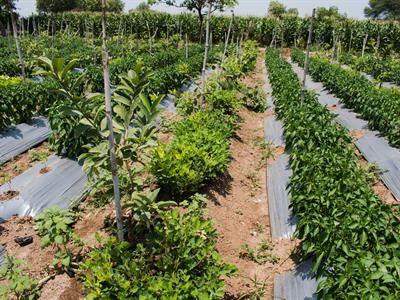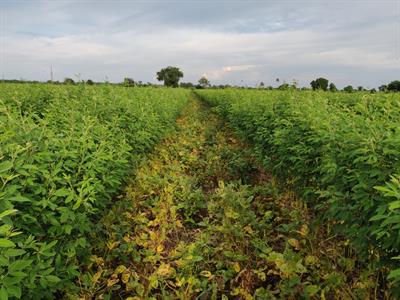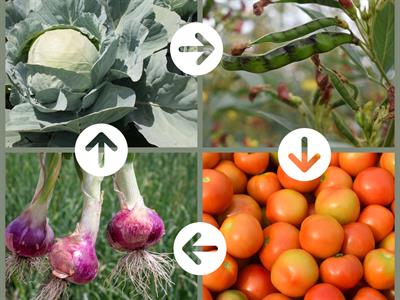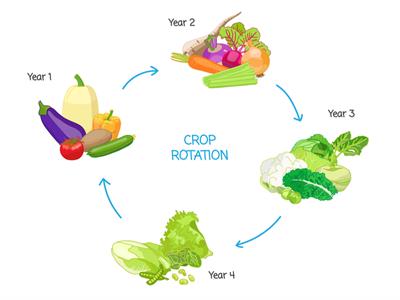PDF chapter test TRY NOW
Cropping patterns involve raising crops to maximise benefit from the same piece of land.
- Mixed cropping
- Intercropping
- Crop rotation
Mixed cropping:
Involves growing two or more crops simultaneously on the same land.

Mixed cropping
Example:
Wheat \(+\) gram, Wheat \(+\) mustard, Groundnut \(+\) sunflower.
Advantages of mixed cropping:
- Reduces the risk of total crop failure that is due to uncertain monsoon.
- Improves fertility of the soil.
- Reduces crop failure of one of the crops.
Inter-cropping:
Growing two or more crops simultaneously on the same field in a definite pattern. A few rows of one crop alternates with a few rows of a second crop. Crops are selected based on nutrient requirements. Two crops must have different nutrient requirements.

Intercropping
Example:
Soyabean \(+\) maize, or finger millet (bajra) \(+\) cowpea (lobia)
Advantages of inter-cropping:
- Ensures maximum utilisation of supplied nutrients.
- Prevents the spread of pests and diseases to all the plants of one crop in a field.
- Both the crops provide better crop returns.
Crop rotation:
Different crops are chosen and grown on a piece of land in a pre-planned succession. The rotation of crops depends upon the crop duration. The availability of moisture and irrigation facilities decide the choice of the cropbe cultivated after one harvest. If crop rotation is done correctly, then \(2-3\) crops are grown in a year with good harvests.


Usefulness of crop rotation:
- If the same crops are grown on farmlands for the long term, the same nutrients depleted from the soil, decreasing soil fertility. At the same time, crop rotation increases soil fertility.
- When crops with different nutritional requirements are grown, soil nutrients get enriched, and the fertility of the land is maintained.
- Different crops are not susceptible to all kinds of pests and diseases.
- Planting different crops on rotation leads to a better yield.
- Crop rotation allows a reduction in the number of fertilisers and pesticides on fields.
